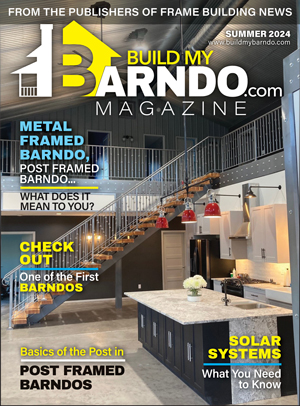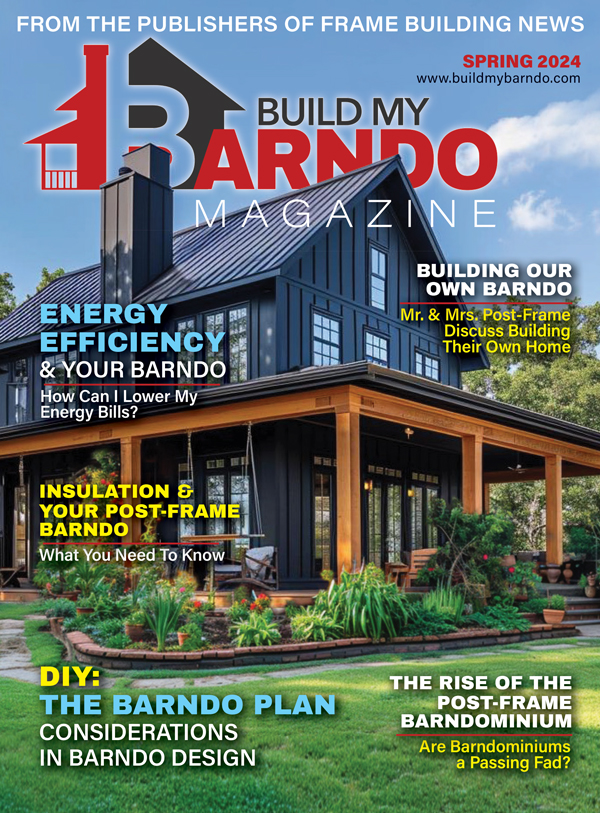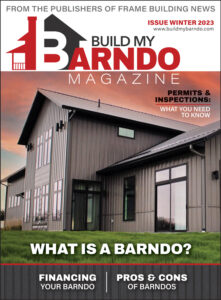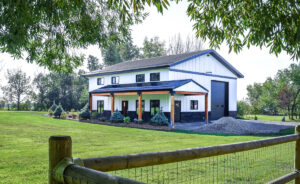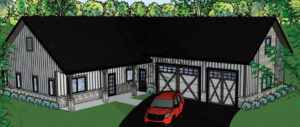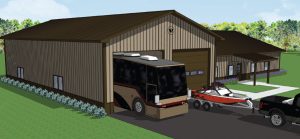Choosing a Site and Planning Your Barndo Placement
Considering All the Ramifications of a Site and How Your Home Will Sit Upon It
Every home building project, whether it’s a barndominium, traditionally framed home, or a teepee begins with where the new home is going to be located. In fact, plans cannot be finalized until a site is chosen because zoning and building codes will need to be factored into the design.
Most people will have a general idea of the area they want to be in because of family, friends, careers, and environmental factors. This geography will impact your build and your barndo placement. While a post and crawl space can work well in the south, a concrete slab with frost protection is better in a northern climate where the home needs to deal with colder weather for a longer period of time. Of course, if you are retired and feel unconstrained by geography, this is something you may want to pay particular attention to.
Once you know the general area you want to be located, here are some items to consider as you begin looking for the exact barndo placement site:
- What is nearby? Agriculture? Will smells and tractors be problematic?
- Is it Suburban? Will neighbors be close? Will there be limitations to what can be done? Is a
- Home Owners Associaltion (HOA) in play?
- Is it a touristy area? Will there be a lot of traffic at certain times of year?
- Are there businesses in the immediate area that may be loud, may emit noxious fumes, or may
- involve a lot of truck traffic?
- Is your site near a busy road? Traffic noise can vary according to the time of day and day of the week. You may want to visit the site at a variety of days and hours.
- Are you planning on running a business out of your barndo? Will local zoning allow it?
- How is property access? Will a long driveway (a potentially expensive proposition) be desired to place the barndo where you want it?
- Is the site already connected to electric? If not, how much will you be charged to install lines based on the location of the new home? Will they be buried or aerial?
- What about fuel lines? What costs are involved with putting them in?
- What is the septic situation? Is the site hooked up to sewer or will you have to put in a septic system? Is perc testing (soil percolation rate) required in this area? Has it been completed? What kind of septic system is required and how much will it cost?
- What conditions do the local codes set out regarding how close you can build to the property line (setbacks)?
- Will you end up too close for comfort to neighbor’s homes, garages, sheds, or other structures if you place your home in certain spaces on the property?
- Will you have space for any additional structures you may desire such as sheds, decks, or pavilions?
- Will you have extra room in case your needs change in the future and you decide to add on to the house or put in a pool?
- What other requirements do the local codes cover?
- Is there a minimum or maximum square footage required?
- Is there a maximum height for a build?
- Is there a percentage of the lot that must remain undeveloped?
- Is the building required to be setback a certain distance from the road?
- Which way do you want your house to face?
Consider how the light will filter in. Do you want to place the house to catch lots of sun in those windows at the back or are the front windows where you want the light?
Do you want to ensure that you look out the front window to see a wooded area or the road?
Do you want your breakfast nook to face the sunrise in the east? - Will you be adding solar panels? Where will they be placed? On the the roof? If so, will part of the roof be facing the right direction to capture sunlight? Or will you have a separate structure that will face the best solar exposure? Or will you put in an array that tracks the sun?
- Are you choosing a site based on the view? If so is there any likelihood that your view could be blocked in the near future by neighborhood development or tree removal?
- Is it important to you to maintain any of the natural features on the site? For example if you want large trees outside your windows you will have to work with the builders to ensure they are not disrupted by the build. You will also want to beware of building too close to the trees as the roots can be quite extensive and can cause problems with foundations or plumbing and can even become dangerous if the roots are damaged.
- If there is a berm and you wish to maintain it as a windbreak or as part of the landscaping you will have to work with your builder on that as well.
- Will the site need grading to deal with a slope or to create drainage?
- What kind of soil is the site made up of? Is it sand that will need constant watering if you are concerned about maintaining a lush carpet of grass? Is it clay that will make gardening more challenging?
- Are there structures on the site that you will want removed? How much will that add on to the cost of site preparation?
- This is not a complete list of everything you may need to consider when purchasing a site or planning where to place your home. The specific site may present its own set of issues, and talking to a professional can help. If your contractor or builder knows what your home building goals and priorities are, they may be able to alert you of potential problems with your site.
Careful consideration of all the implications of your site and your home’s exact placement can mean the difference between getting what you want and forever regretting that you missed out on that wooded view you had your heart set on.











